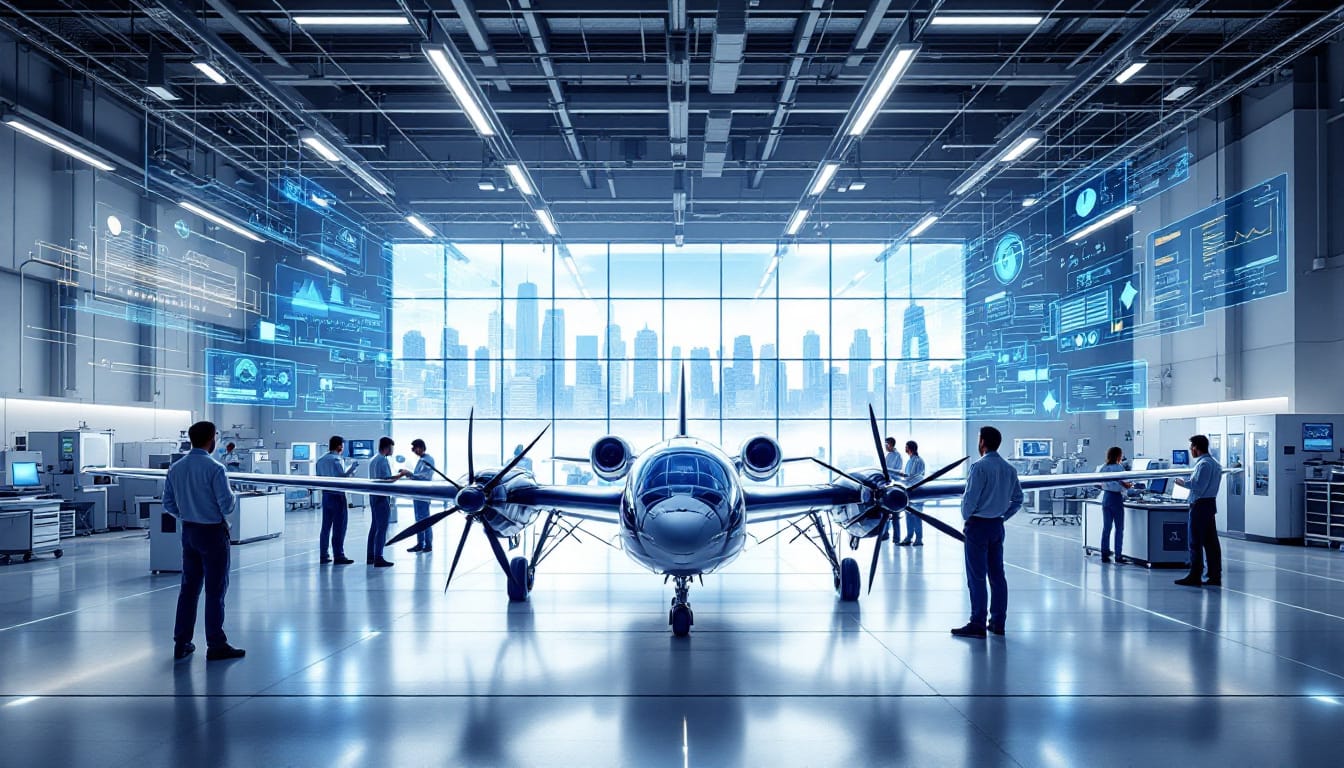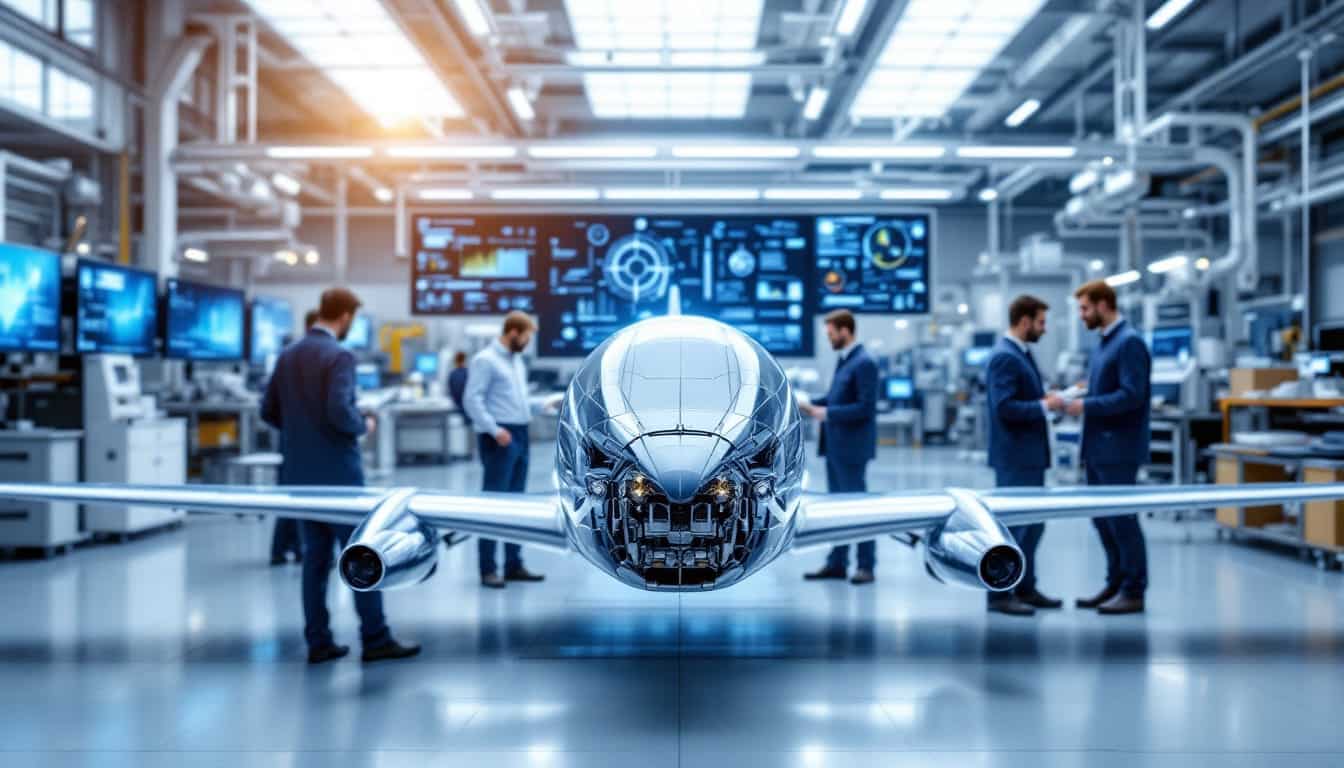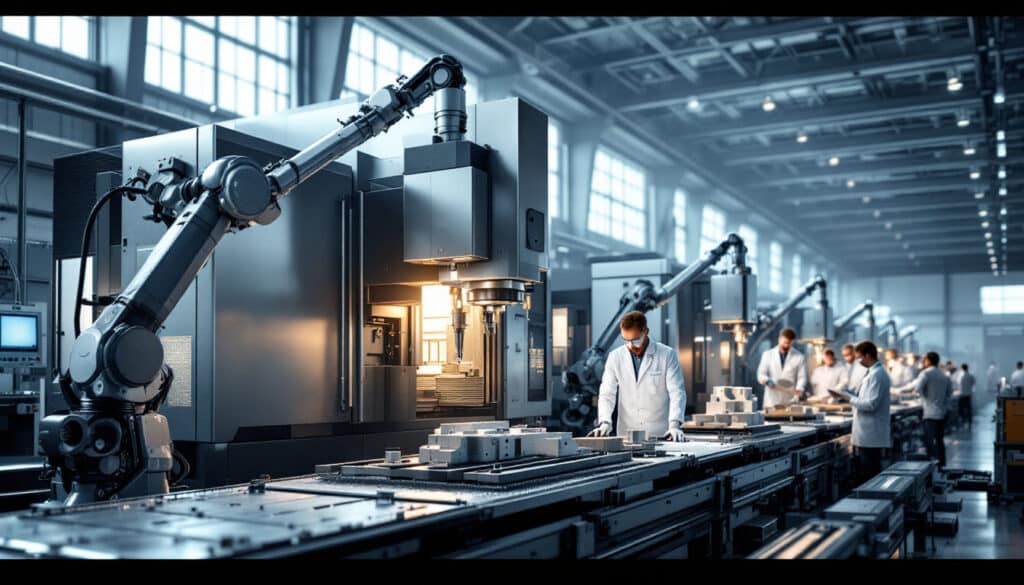Your recent activity on our site has caught our attention.We have detected traffic similar to that generated by bots.To ensure the security and quality of your experience, we recommend performing a few checks.
Please disable any anonymous proxy used during your connection and try to access our platform again. If the problem persists, feel free to contact our customer service mentioning the following incident number: d54dfd2c-cy3y-4460-add7-07e14b1dd6d4. In the meantime, you can continue browsing by selecting the box “I am human”.

The era of digital transformation has opened new perspectives in the aerospace sector. Among the key players, Airbus, Safran, and Daher stand out for their commitment to electrification. This transition, while promising, presents complex challenges that these companies strive to overcome.
Table des matières
ToggleWhat are Airbus’s initiatives for electrification?
Airbus has taken bold steps to integrate electrification into its business models and products. The company is investing heavily in research and development to create more environmentally friendly and energy-efficient aircraft. An emblematic example is the ZEROe project, aimed at developing the world’s first commercially viable hydrogen-powered aircraft.
This initiative is part of a broader strategy to reduce the carbon footprint of the aerospace industry. In parallel, Airbus collaborates with technology partners to integrate advanced cyber-physical systems, enabling better energy management and optimized aircraft performance.
Furthermore, Airbus is exploring digitalization solutions to improve operational efficiency. By adopting cloud technologies, the company facilitates the collection and analysis of real-time data, essential for developing more efficient electrical systems.
For those interested in advancements in electrification, articles such as The Renault R5 Electric: a Symbol of Renewal provide complementary perspectives on ongoing innovations.
How does Safran contribute to the electrification of aerospace?
Safran plays a crucial role in electrification thanks to its cutting-edge technologies and innovative solutions. The company focuses on developing electric propulsion systems for commercial and military aircraft. These initiatives aim to reduce dependence on fossil fuels and minimize greenhouse gas emissions.
Safran is also investing in connectivity and automation of industrial processes. By integrating cloud solutions, the company optimizes its production lines and improves the predictive maintenance of electrical equipment. These advances allow for greater flexibility and efficiency in manufacturing aerospace components.
Moreover, Safran collaborates with major players in the technology industry, such as Martin Lundstedt from Volvo Group, to develop autonomous and electrified vehicles, thereby expanding its expertise and applications in the field of electrification.
What is Daher’s approach to electrification?
Daher, less known than its counterparts Airbus and Safran, adopts a unique approach to electrification by focusing on tailored solutions for its customers. The company invests in the research of lightweight and durable materials, essential for the electrical systems of aircraft. These materials not only contribute to reducing the weight of the planes but also improve overall energy efficiency.
Additionally, Daher is exploring the integration of cyber-physical systems into its manufacturing processes. This integration enables better monitoring and management of electrical systems, facilitating early detection of anomalies and preventing failures. Through these innovations, Daher enhances the reliability and performance of its electrical products.
Daher’s initiatives also extend to the training and skill development of employees. The company implements training programs focused on new electrical and digital technologies, ensuring a skilled workforce ready to meet the challenges of Industry 4.0.
What are the technological challenges of electrification in aerospace?
Electrification in aerospace presents several major technological challenges. One of the main obstacles is the development of electric propulsion systems that are sufficiently powerful and lightweight for aerospace applications. Current technologies still need to evolve to meet the strict performance and safety requirements of commercial aircraft.
Another challenge lies in energy management. The electrical systems of aircraft require effective and durable energy storage solutions. Advances in batteries and supercapacitors are crucial to ensure sufficient autonomy while maintaining minimal weight.
The security of cyber-physical systems is also a major concern. With the increased integration of digital and cloud technologies, the risks of cyberattacks are rising. It is essential to implement robust security measures to protect critical data and systems of aircraft.
At the same time, intersectoral collaboration is essential to overcome these challenges. Partnerships with technology companies, such as Nvidia, allow for resource sharing and accelerate the development of innovative solutions. These collaborations are essential to advance quickly in the race for electrification.
What are the economic and environmental benefits of electrification?
Electrification offers numerous economic and environmental benefits for the aerospace sector. Economically, it allows for a significant reduction in operational costs through more efficient energy consumption and optimized predictive maintenance. Electrical systems are often simpler and less costly to maintain than their traditional internal combustion counterparts.
Environmentally, electrification helps to reduce greenhouse gas emissions, aligning the aerospace industry with global objectives to combat climate change. Initiatives such as the development of hydrogen-powered aircraft by Airbus illustrate this commitment to cleaner and more sustainable aviation.
Furthermore, using lightweight and recyclable materials in electrical systems contributes to a reduced carbon footprint throughout the lifecycle of aircraft. This sustainable approach meets the growing expectations of consumers and regulators regarding environmental responsibility.
To explore the benefits of electrification in other sectors, see The Merger Project Between Honda and Nissan, which also examines the economic and environmental synergies of electrification.
How does digital transformation support electrification?
Digital transformation is an essential catalyst for electrification in aerospace. Digital technologies, such as artificial intelligence and big data, allow for optimized management of electrical systems. With these tools, companies can analyze massive data volumes to improve performance and reliability of electrified aircraft.
Cloud platforms offer flexible and scalable infrastructure, facilitating collaboration between different departments and industrial partners. This connectivity allows for rapid innovation and continuous adaptation to new market requirements.
Moreover, the digitalization of manufacturing processes, thanks to cyber-physical systems, enables advanced automation and better traceability of electrical components. These improvements ensure more efficient production and superior quality of finished products.
An example of the impact of digital transformation is illustrated in the must-see videos of the moment, where digital innovations are showcased to demonstrate their crucial role in the development of electrified technologies.
What are the impacts of electrification on the supply chain?
The adoption of electrification profoundly influences the supply chain in the aerospace sector. Manufacturers must adapt by integrating new suppliers specialized in electrical technologies and advanced components. This transition requires a reevaluation of relationships with existing partners and the search for new strategic collaborations.
Quality and specificity requirements for electrical components are heightened, pushing companies to invest in training and skill development for their teams. Digitalization plays a crucial role here by facilitating the management of logistics flows and ensuring precise traceability of the materials used.
Moreover, electrification accelerates the necessity for a more resilient and flexible supply chain. Companies must be capable of swiftly adapting to technological changes and fluctuations in demand. The integration of cloud technologies and cyber-physical systems allows for better forecasting and inventory management, thereby reducing the risks of stockouts or overstocking.
Finally, intersectoral collaboration becomes essential to harmonize efforts and share best practices. Initiatives like Nvidia’s recruitment to create infrastructure in the United States illustrate the importance of strong partnerships in building an effective and sustainable supply chain.
What are the competitive advantages for Airbus, Safran and Daher through electrification?
Electrification confers significant competitive advantages to companies like Airbus, Safran, and Daher. By adopting advanced electric technologies, these companies position themselves as leaders in innovation in the aerospace sector. This strengthened position allows them to differentiate themselves in an increasingly competitive market.
Electrified solutions offer better energy performance and a reduction in operational costs, which is attractive to customers looking for more economical and environmentally friendly solutions. Furthermore, the commitment to sustainability enhances their brand image and meets the growing expectations regarding environmental responsibility.
Additionally, the integration of digital and cyber-physical technologies enables optimization of production processes and improvement of the quality of finished products. These enhancements lead to greater customer satisfaction and increased loyalty.
To illustrate the positive impact of digital transformation and electrification, case studies such as the must-see videos of the moment concretely demonstrate the benefits of these innovations across various sectors.
How are customer support and security integrated into electrification?
The transition to electrification requires particular attention to security and customer support. Companies like Airbus, Safran, and Daher are investing in robust security systems to protect their electrical and cyber-physical technologies against cyber threats. Secure data and system management is essential to guarantee the reliability of electrified aircraft.
In case of technical issues, effective customer support is indispensable. Companies set up dedicated teams to respond quickly to incidents and ensure the seamless operation of electrical systems. For example, if an error persists in the intelligent systems of aircraft, customer service can intervene by mentioning a specific incident number, thus ensuring a quick and effective resolution.
Moreover, the integration of digital solutions allows for continuous monitoring and predictive maintenance, reducing the risks of failures and improving overall safety. Cloud technologies facilitate the collection and analysis of real-time data, enabling early detection of anomalies and proactive intervention.
However, it is crucial to raise awareness among end users about the importance of security and connectivity. For example, if activity on an online system is suspected of being automated, it is recommended to disable anonymous proxies and contact customer support if problems persist. Meanwhile, secure browsing can be maintained by confirming user authenticity through mechanisms like the “I am human” checkbox.





